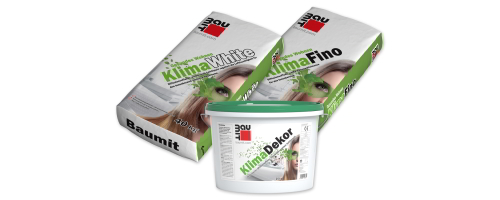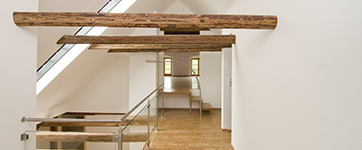


Did you know that the average person spends as much as 90% of their lives indoors? If you thought the air quality inside your home didn’t matter, think again.
The quality of the air within our living spaces is not only important for maintaining comfort but for protecting our health since stable humidity and room temperature contribute significantly to our wellbeing
Everyone wants to feel good at home, to have a safe space where they can relax and recharge their batteries. Our home also needs to support our physical and mental health rather than compromise it, and Baumit’s range of healthy living products and breathable render can do just that.
Since humans consume up to 13.5 kg of interior air and just 1.5kg of fresh air per day, the quality of the air inside our home is also responsible for our quality of life. Air temperature, room surface temperature, airflow, and air humidity have a significant impact on indoor climate.
To ensure that the indoor air remains ‘healthy’ and does not affect our wellbeing, attention must be paid to the quality and function of the building materials we use. As these materials usually stay in the building forever, it is essential that they are breathable, durable, and — most importantly — free from any pollutants.
Read on to learn about all the factors that can affect a healthy indoor climate, as well as the measures and materials that encourage it.

"We want people to feel good in their houses.
Our Products are based on research in the Viva Park"
- Mag. Robert Schmid, founder of Viva Research Park Project

Strong fluctuations in humidity and temperature, too few airborne ions, irregular air currents, and an increased amount of fine pollutant particles can all contribute to damage of the respiratory tract, impaired lung function, and cardiovascular diseases.
Moulds, bacteria, viruses, parasites, and allergens in the air are also a threat to the respiratory system. Allergens come in the form of house dust, mould spores, animal epithelia, building materials, and even some plants. They can cause nose and eye inflammation, runny noses, and even asthma.
The chemical contributions to poor indoor air quality take the form of smells, solvents, formaldehyde, CO2, VOC, and smoke. Unpleasant smells can come from furniture, floor finishes, drainpipes or even just from the outside, disturbing the ambience and wellbeing of those inside.

Modern buildings are often designed to be low-energy or ‘passive’. This leads to an ever-increasing vogue for air-tightness in order to provide optimal thermal protection and to reduce the need for additional heating.
Air-tightness also partially prevents excessive heat gain in the summer. In recent decades, summers have become hotter in our geographic area, resulting in unpleasantly overheated interiors, which cannot be cooled down by simple ventilation.
To combat overheating, temperature comfort guidelines should be adhered to.
Temperature comfort happens when the average surface
and air temperatures in a room are around 21 °C.
Though, ideally, there should be a different temperature
in each of the main rooms of a house:
BATHROOM
LIVING ROOM
BEDROOM
More on the topic

Baumit’s breathable renders, plasters, and paints optimally regulate moisture and eliminate odours to provide a balanced indoor climate.
Find out more
Strong and durable, the traditional material of lime plaster is perfect for both internal and external building projects.
Find out more
The Viva Research Park is constantly testing and comparing building materials to examine the impact and benefits they bring to those living in the building.
Find out more
The Healthy Living section on our website is full of interesting information about the quality of our housing and how to create a healthy home.
Find out moreFindings from Viva Research Park show how insulated homes that have the right wall thickness and composition greatly outperform uninsulated homes; in some instances, reducing energy consumption by up to 250%!
So when planning your home’s design, it is worth ensuring the wall structure includes a high-quality external thermal insulation system as well as a breathable render. Good thermal insulation will also contribute towards a balanced indoor temperature and reduce drafts.

For more information about our external wall insulation systems or our breathable render, browse our product solutions guide or get in touch with the Baumit experts today.